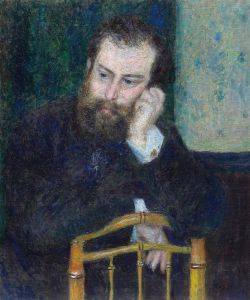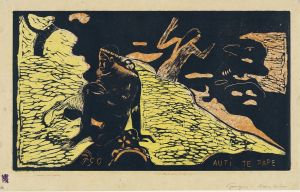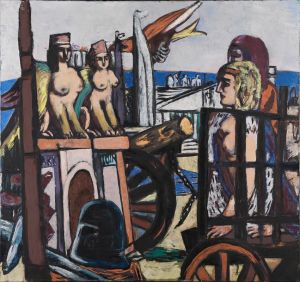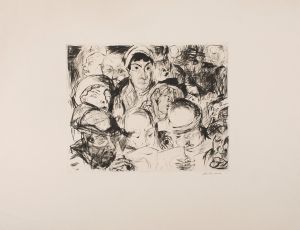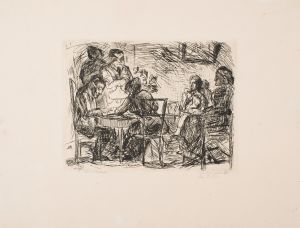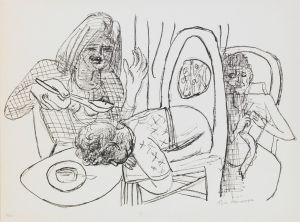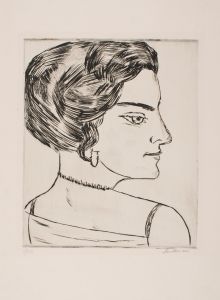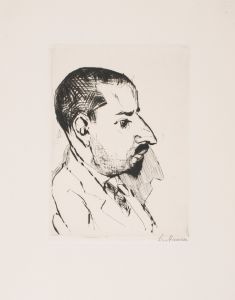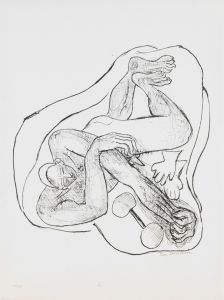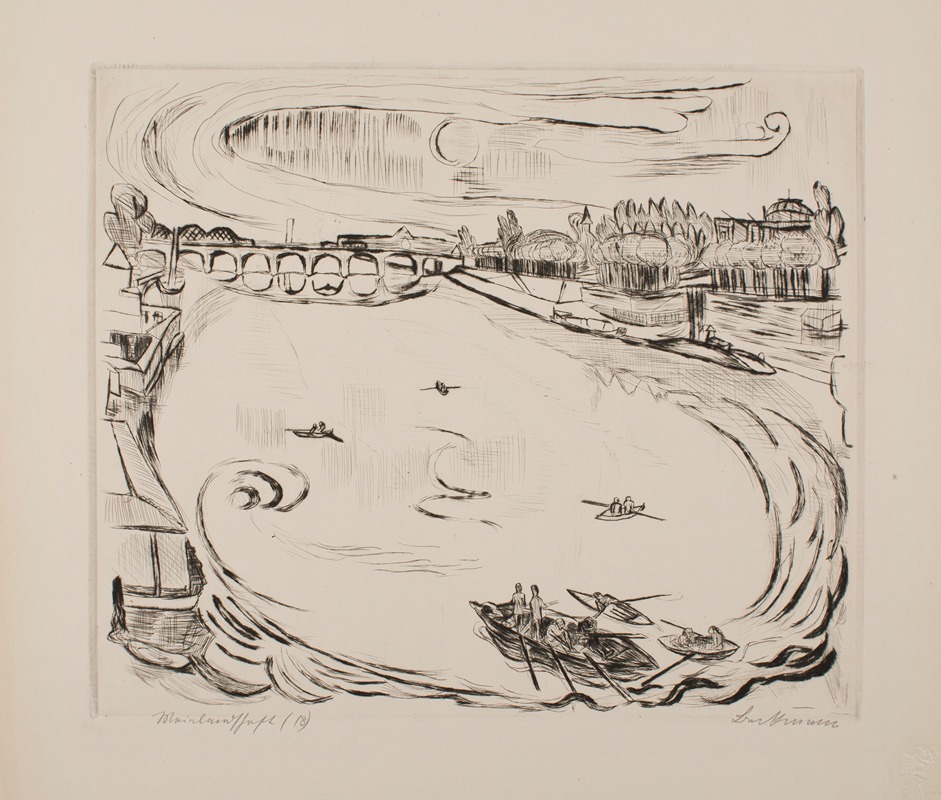
Main River Landscape, plate 6 from the portfolio ‘Faces’
A hand-painted replica of Max Beckmann’s masterpiece Main River Landscape, plate 6 from the portfolio ‘Faces’, meticulously crafted by professional artists to capture the true essence of the original. Each piece is created with museum-quality canvas and rare mineral pigments, carefully painted by experienced artists with delicate brushstrokes and rich, layered colors to perfectly recreate the texture of the original artwork. Unlike machine-printed reproductions, this hand-painted version brings the painting to life, infused with the artist’s emotions and skill in every stroke. Whether for personal collection or home decoration, it instantly elevates the artistic atmosphere of any space.
Max Beckmann, a prominent German painter and printmaker, created "Main River Landscape, plate 6 from the portfolio ‘Faces’" during a period marked by significant personal and political upheaval. Beckmann is renowned for his contributions to the Expressionist movement, although he himself rejected the label, preferring to be seen as an independent artist. His works often reflect the tumultuous times he lived through, including the aftermath of World War I, the rise of Nazism, and his subsequent exile.
"Main River Landscape" is part of Beckmann's portfolio titled "Faces," which was completed in 1918. This period was crucial in Beckmann's career, as it marked his transition from the more traditional styles of his early work to the more complex and symbolic compositions that characterized his later pieces. The portfolio "Faces" consists of ten lithographs, each exploring different aspects of human experience and emotion, a recurring theme in Beckmann's oeuvre.
The "Main River Landscape" specifically captures a scene along the Main River, which flows through Beckmann's hometown of Frankfurt, Germany. This setting holds personal significance for the artist, as it is tied to his roots and early life experiences. The lithograph depicts a landscape that is both serene and introspective, reflecting Beckmann's deep connection to his environment and his ability to convey mood and atmosphere through his art.
Beckmann's technique in this lithograph, as in many of his works, is characterized by bold lines and a strong sense of composition. His use of lithography allowed him to experiment with contrasts and textures, creating a dynamic interplay between light and shadow. This method also enabled Beckmann to produce multiple copies of his work, making his art more accessible to a broader audience.
The "Faces" portfolio, including "Main River Landscape," was created during a time when Beckmann was grappling with the horrors of World War I. The war had a profound impact on him, both personally and artistically, leading to a period of intense reflection and transformation. This is evident in the somber and contemplative nature of the works in the portfolio, which often explore themes of identity, mortality, and the human condition.
Beckmann's work was not only a response to his personal experiences but also a commentary on the broader societal changes occurring in Germany and Europe at the time. The post-war period was marked by political instability and social upheaval, and Beckmann's art reflects the uncertainty and complexity of this era.
Despite the challenges he faced, including being labeled a "degenerate artist" by the Nazi regime and eventually fleeing Germany, Beckmann continued to produce art that was both innovative and deeply personal. His legacy as a master of modern art endures, with his works held in high regard by museums and collectors worldwide.
"Main River Landscape" is a testament to Beckmann's skill as a printmaker and his ability to capture the essence of a place and time. It remains an important piece within his body of work, offering insight into the mind of an artist who was both shaped by and a shaper of his times.







